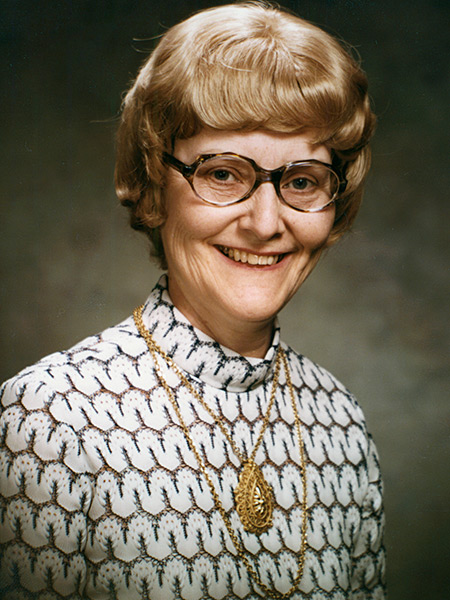Dec. 8, 2016
 Virginia Milligan, R.T.(R), FASRT, had plans to become a nurse when one of her high school teachers made a recommendation that changed those plans. Her teacher’s sister worked in a clinic taking radiographs. She recommended that Virginia shadow her as a way to gain experience in the health care field before she graduated high school.
Virginia Milligan, R.T.(R), FASRT, had plans to become a nurse when one of her high school teachers made a recommendation that changed those plans. Her teacher’s sister worked in a clinic taking radiographs. She recommended that Virginia shadow her as a way to gain experience in the health care field before she graduated high school.
“It didn’t take long for me to realize that I wanted to go into x-ray instead of nursing, and I began looking for schools,” Virginia said.
In 1946, she completed her training and became a registered radiologic technologist.
Education
“When I was in training, there weren’t many school-based programs; most were in hospitals or clinics,” Virginia said. “My training was part x-ray and part radiology, as my instructor wanted us not only to know how to take the image but also to understand why the image was being taken and what the radiologist would be looking for in an image.”
Some of Virginia’s major classes were taught by General Electric representatives because that was the type of equipment the hospital used. The company would send in one of their experts on the equipment to teach the physics of the machine.
The equipment changed a lot during her training, as well as throughout her career. “I remember when I was in training learning to do a procedure on a piece of equipment that was older than I was at the time, and less than a year later we had to relearn the procedure because the equipment changed.”
After graduating from the program, she worked at a hospital that sent her and other R.T.s on a bus to a state society meeting. This was her first interaction with the state society and where she first learned about the ASRT.
Career and Professional Involvement
Within a year of becoming an R.T., Virginia became a member of the ASRT and joined the Illinois state society. She eventually became the president of the Illinois Society of Radiologic Technologists.
Through her work with other state affiliates, she was able to meet medical imaging and radiation therapy professionals from all over the United States. Those connections led to her relocation to Phoenix, Arizona, in March 1959.
“A colleague I had met through my affiliate work recommended me for a teaching job at the hospital they worked in,” Virginia said.
The job offer came at a great time for Virginia as she was teaching part-time at a new school in Chicago and working part-time for the radiologist who had trained her. The radiologist was planning to retire that spring and she needed to find a full-time job. She accepted the teaching position and moved to Phoenix.
It was also good timing in her personal life; her parents wanted to move to Arizona when they retired. The new position allowed her to move first and then help them relocate. Nine months after she left Chicago, her parents joined her in Phoenix.
“Shortly after I started at the hospital, I was asked to take over the department, which was called the special procedures department and was separate from the radiography school at the time,” Virginia said. “They later combined the departments and hired someone to oversee the x-ray school, while I managed the combined department.”
The school eventually moved out of the hospital and into a local community college. Prior to that, Virginia was still teaching a few courses, but after that they hired instructors at the college to teach the classes, which allowed her to focus on managing the 75 employees that made up the medical imaging department and isotopes section of the hospital.
Virginia remained active at the state and national levels following her relocation to Arizona. “While I was working at the hospital, I became the president of the Arizona Society of Radiologic Technologists and ran for office with the ASRT as well,” Virginia said. “When I was in office, the ASRT was much smaller than it is now.”
She also served on the American Registry of Radiologic Technologists board during that time, which helped her stay up to date about educational requirements, new technology and new specialties.
“I enjoyed being active and being so involved in the R.T. community,” she said. “Seeing others succeed in the profession and hearing the stories they told motivated me to want to do more.”
Supporting the Future
Virginia learned about the ASRT Foundation through her involvement at the state and national levels. “I began donating to the Foundation because I wanted to support others coming into the profession,” she said.
After working for years in hospitals surrounded by medical professionals who didn’t really know what she did, she saw the importance of raising awareness of the medical imaging and radiation therapy field and of supporting R.T.s to move the profession forward. That’s also why Virginia joined the Celebration Campaign — to ensure that the Foundation is able to continue supporting the future of the profession and the people in it for years to come.
“I saw a lot of changes to the profession in my career, and I want to help ensure that its future stays bright. I encourage R.T.s to stay engaged in the associations and get involved with the specialties to stay informed from the state level up to the national level,” she said.